Hiking on Ainapo Road/Trail, 2007 March 30
This web page is a journal of my hike on Ainapo Road and Ainapo Trail
on March 30, 2007. To find out how to get to this trail, see
these web sites:
Ainapo Road
,
Ainapo Trail
. Take note of the requirement to call the evening before for Road access.
Lower Part of Ainapo Road
Ainapo Road starts beyond a locked gate just off Highway 11.
Driving up the road requires a 4-wheel drive vehicle, skill, and
luck. I was lacking in at least two of those, so I parked at
the bottom of the road and hiked instead.
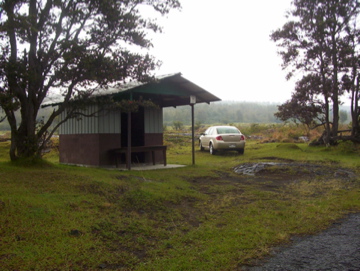
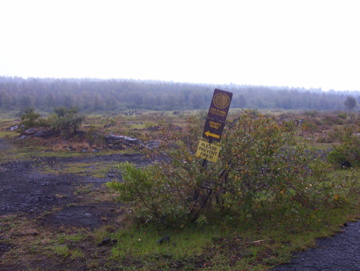
I started before dawn (4:55 AM), but I took some photos on the way back
down to show the landmarks. The beginning of the road/hike is across
Kapapala Ranch.
The otherwise friendly cows don't seem to come closer than a
hundred feet.
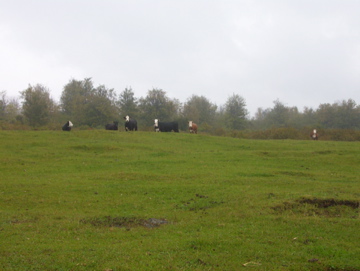
When the road opens up into a pasture, keep left near the fence. There will
be a marked opening in the fence, which I reached at 5:15 AM.
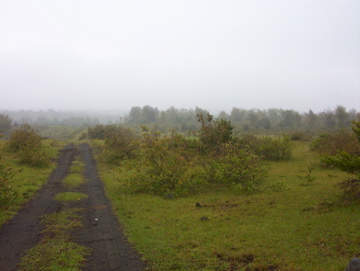
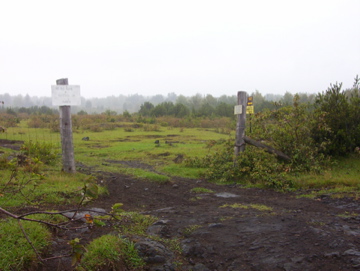
After passing through the opening in the fence, the road is a little hard to
make out, but it eventually becomes more clear. A little while later, there
is a marked right turn in the road at the near side of a eucalyptus grove.
I got there at 5:40 AM.
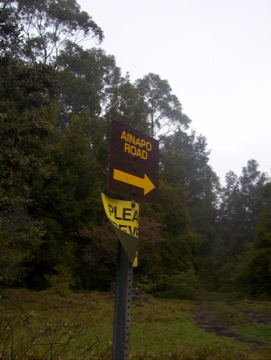
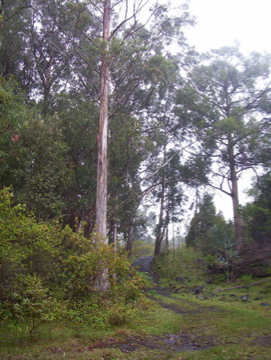
There was another sign marking the road, which I passed at 5:55 AM, and
about this time I got a first view of the Mauna Loa summit off in the
distance. At 6:15 AM, I stopped for some photos of an uncommon ohia
tree with cream-colored flowers. It was on the right side of the road, off to
itself.
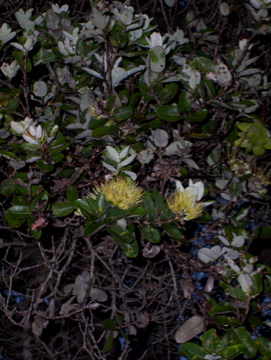
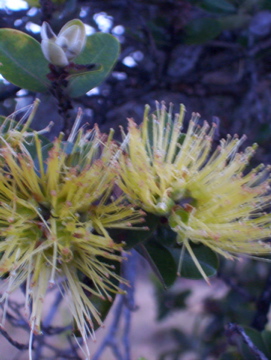
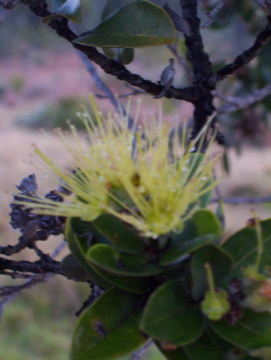
The summit of Mauna Loa still looks very far away.
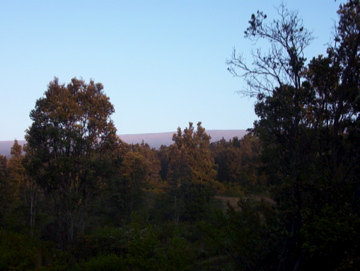
Upper Part of Ainapo Road
A lot of walking later, I got to the upper edge of Kapapala Ranch and
the beginning of Kapapala Forest Reserve. (This was at 6:50 AM.) The
cows don't go further than this, but there are still mammals beyond
the gate (feral sheep and pigs). By now, the forest is mostly native ohia and
koa.
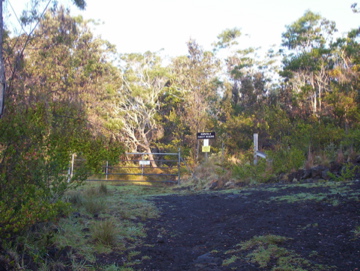
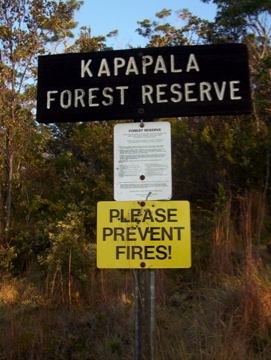
It's a little over two miles to the Ainapo Trail trailhead, but I
slowed down the pace to enjoy the forest and the birds. Here is
one of my favorite web sites
documenting the Hawai'i endemic birds. This time of
year at least, the apapane own the place. From here to the cabin, they
were constantly singing. The majority were the red adults, but there were
plenty of the gray juveniles as well. It is interesting to hear the
variety of song; in one location, one will often hear the same song
repeated by several birds. As one hikes up the trail, one hears different
songs. Then on the way down, one hears a lot of familiar songs, but played in
the opposite order.
Amongst the apapane, there are plenty of the other common native forest
birds -- amakihi, i'iwi, oma'o, and elepaio. Of course the Japanese white eye
are around, and at least three more introduced species: red-billed
leiothrix, Khalij pheasant, and Erckel's francolin.
According to Pratt, "Enjoying Birds and Other Wildlife in
Hawai'i", three endangered native species -- akepa, Hawaii creeper, and
akiapola'au -- might be encountered somewhere up the trail. I had no luck
finding the
first two here, but I did find two groups of akiapola'au. Both groups
were in koa trees, as usual. The first group (1 adult and 3 juvenile)
was in this cluster of koa on the left side of the road (7:55 AM).
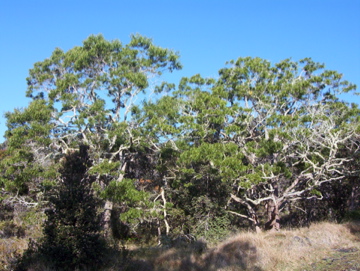
A few minutes later (8:10 AM), I found an adult on the right side of
the road. It must be somewhere in the picture below, but my little
camera doesn't have enough magnification to photograph birds at this
distance. I had a much better view in binoculars.
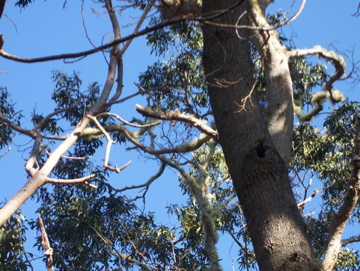
I finally arrived at the trailhead at 8:20 AM.
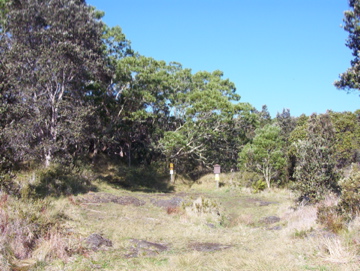
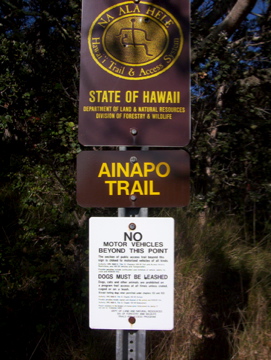
Ainapo Trail from Trailhead to Halewai Cabin
The width of the trail changes right at the start. This is no longer a
road, and in places it's about as wide as my shoe. The trail ranges from
easy to difficult to follow, and the flagging tape in the low branches is
useful, especially on the way down.
The forest is beautiful and varied along the trail. In places, there are
old groves with fern understory.
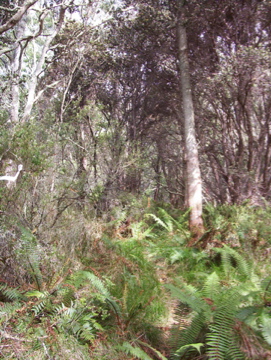
In other places, the trees are young, perhaps due to interrupting Mauna
Loa lava flows in the last few hundred years.
I saw a handful of the ohia with salmon colored blossoms. This one was maybe
50 feet to the left side of the trail on the way up (9:50 AM, not long before
the stone wall). In one of the photos, you can compare color to my Red Sox
jacket.
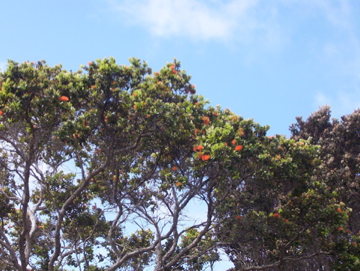
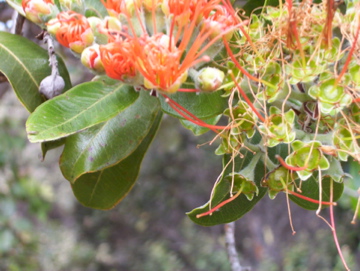
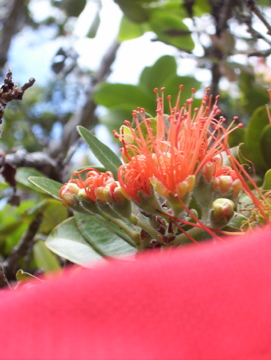
For comparison, here is a photo of the much more common red ohia lehua:
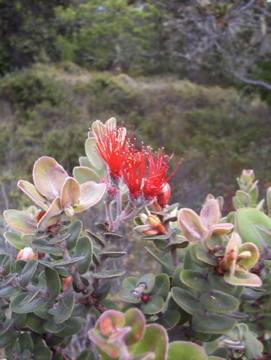
Still proceeding at birdwatching pace, I got to the stone wall at
9:55 AM.
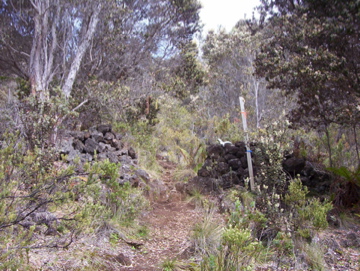
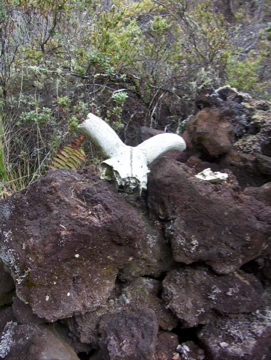
This landmark is noted in the Pratt book as the beginning of the end of
the dense native bird population, and also the location of akepa
sightings a few years ago. No such luck with akepa today.
Although there are still thick groves ahead,
in general the trees are thinning, and it becomes easier to see the
underlying pahoehoe.
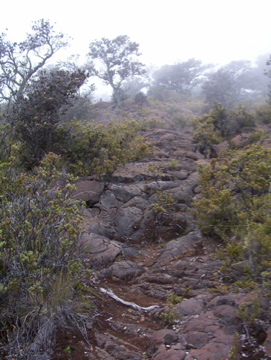
I got to the Halewai cabin (2.7 miles from the trailhead) at 10:40 AM.
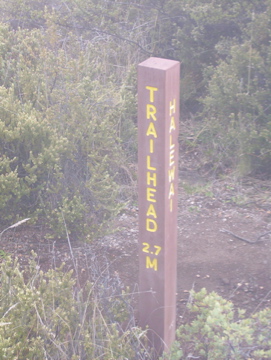
Due to the elevation (7750 feet), I thought this would be above the
tree line, but I was wrong. By now, thin clouds had rolled in, so I
couldn't see how far ahead the tree line was.
The cabin looks nice, so maybe I'll consider stopping in it on a future hike.
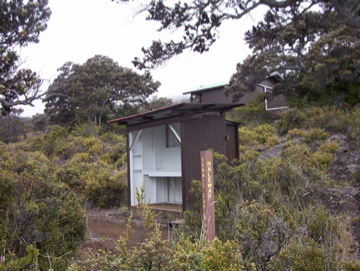
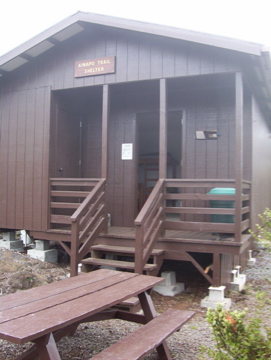
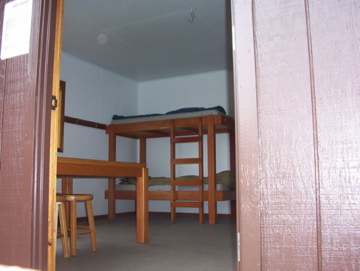
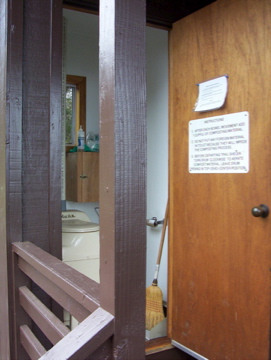
Just 7.5 more miles to the Mauna Loa summit? Not today, thanks!
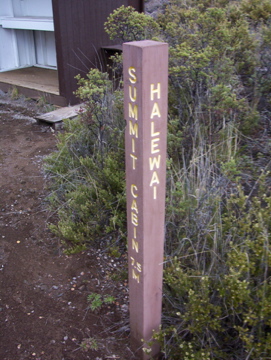
Not for Everyone
I took a 15 minute break at the cabin, then started back down the Trail
and Road at 11:00 AM. Back on the Road, there were some decent views of the
"Ka'u Desert", lava flows, and cinder cones. I got back to my car at 3:55 PM,
and boy did my
legs hurt! As a hiking-only trip, this was an 11 hour, 21.5 mile rountrip
journey with 5000 ft. change in elevation (enjoyed twice). All in all, it
was a beautiful day, with sun in the morning hours, and welcome clouds
mid-day. I have seen nearly as many birds in other locations with far less
effort (in the morning on the
Pu'u O'o Trail,
for example), but it was nice to see this terrain, especially after a
miserable, aborted first attempt in steady rain in January when we made a
wrong turn after only a mile. A 4-wheel drive "boost" to the trailhead
might make me want to return to Ainapo Trail (especially if I don't have
to drive). A multi-day hike to the summit also tempts me.
Darren Dowell, Last updated 2007 July 17






























